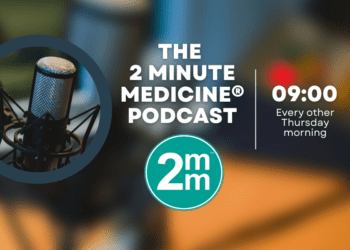Rate of opioid prescribing in adolescents largely unchanged
1. Between 2005 and 2015, there was a small decrease in the rate of opioid prescriptions in emergency department (ED) visits to adolescents and young adults, and no change in the opioid prescribing rate in outpatient clinic visits.
2. Around half of ED visits for dental disorders, clavicle fractures, and ankle fractures in youth were associated with opioid prescription.
Evidence Rating Level: 2 (Good)
Study Rundown: The rise of misuse and abuse of prescription opioid medications has been well-described among adults, but less is known about prescribing rates and use to adolescents and young adults. In this retrospective study, researchers analyzed national databases of ED and outpatient clinic visits by youth aged 13 to 22 years between 2005 to 2015 to examine trends in opioid prescribing to adolescents and young adults. Opioids were prescribed in about 15% of ED visits and 3% of outpatient clinic visits by youth. There was a small decrease in the rate of opioid prescriptions among ED visits over the study period. Dental disorders, clavicle fractures, and ankle fractures were the ED diagnoses most commonly associated with opioid prescription.
These findings are limited by data describing visits rather than individual patients. Furthermore, the data contain no information on duration and quantity of opioid prescription. Nonetheless, the study is strengthened by its large, national sample. For physicians, these findings highlight the importance of carefully examining opioid prescribing practices in adolescents and young adults, and may guide future initiatives to reduce excessive opioid prescribing.
Click to read the study, published today in Pediatric
Click to read an accompanying editorial in Pediatrics
Relevant reading: Prescription Opioid Exposures Among Children and Adolescents in the United States: 2000–2015
In-Depth [retrospective cohort]: Researchers used the National Hospital Ambulatory Medical Survey and National Ambulatory Medical Care Survey to analyze data representing 197 million ED visits and 801 million outpatient clinic visits across the United States. Visits were included if patients were aged 13 to 22 years. Logistic regression models were used to examine changes in opioid prescriptions over time.
During the study period, 52 million visits (5.2%; 95% confidence interval [CI]: 4.9 to 5.5%) were associated with an opioid prescription. The rate of opioid prescribing to adolescents and young adults was 14.9% (95% CI: 14.4% to 15.6%) in ED visits and 2.8% (95% CI: 2.5% to 3.1%) in outpatient clinic visits. Over the study period, there was a small decrease in the rate of opioid prescriptions among ED visits (OR 0.96; 95% CI: 0.95 to 0.98), but not in outpatient clinics. The ED diagnoses most commonly associated with opioid prescription were dental disorders (59.7%; 95% CI: 41.0% to 78.4%), clavicle fractures (47.0%; 95% CI: 29.8% to 64.3%), and ankle fractures (38.1%; 95% CI: 23.8% to 52.4%).
Image: PD
©2019 2 Minute Medicine, Inc. All rights reserved. No works may be reproduced without expressed written consent from 2 Minute Medicine, Inc. Inquire about licensing here. No article should be construed as medical advice and is not intended as such by the authors or by 2 Minute Medicine, Inc.







